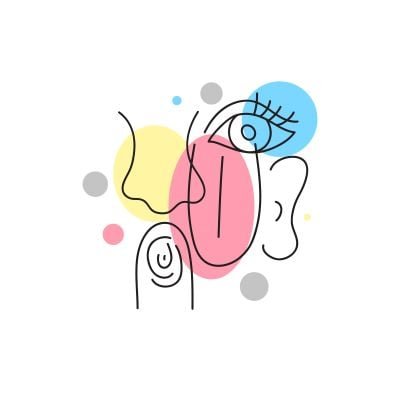How Sensory Processing Impacts OCD

When an individual grapples with Obsessive-Compulsive Disorder (OCD), their brain perceives otherwise neutral situations, objects, or individuals as potential threats. This perception triggers the brain’s fight or flight response, leading to a profound sense of panic with accompanying physiological effects. Individuals often resort to repetitive rituals to regain a semblance of control over this overwhelming anxiety.
In my clinical work with clients who present with OCD, our discussions encompass a wide array of topics, including an exploration of their family history. It’s crucial to acknowledge that OCD bears a substantial genetic component, often coexisting with other neurodiverse conditions like Attention-Deficit/Hyperactivity Disorder (ADHD), Autism Spectrum Disorder (ASD), and Bipolar Disorder. Conducting a comprehensive history assessment is vital since, in many cases, the observable OCD behaviors may be symptomatic rather than the root cause.
Typically, clients with OCD are aware of their heightened anxiety and recognize the irrationality of their reactions. However, there are instances where clients struggle to pinpoint or distinguish the underlying triggers for their behaviors. In such scenarios, clients may find solace in the ritual itself, even if they dislike the loss of control during its execution.
In response to this emerging trend, I have incorporated a sensory profile assessment into my clinical practice. Traditional Exposure and Response Prevention (ERP) therapy may prove ineffective when clients cannot readily identify the specific emotions or thoughts driving their compulsions. Frequently, clients describe their distress in terms of bodily sensations rather than explicit thoughts. Many individuals grappling with OCD symptoms concurrently contend with sensory processing challenges, and failure to address these issues in the treatment plan can impede therapeutic progress and longterm sustainability of change.
It is worth noting that individuals with OCD symptoms often exhibit heightened sensitivity to sensory stimuli and may engage in avoidance behaviors to cope. These physiological sensations can be so distressing that they activate the fight or flight response with minimal provocation. For instance, a client who is sensitive to loud noises may experience significant dysregulation upon hearing the siren of a fire truck, perceiving it as a potential threat. This heightened sensitivity can subsequently drive the individual to engage in OCD rituals as a relief.
In the example of the fire truck, a proactive approach involves the client acknowledging their sensory sensitivities and carrying earbuds as a coping tool. This measure empowers the client to regain a sense of control and diminishes the compulsion to engage in ritualistic behaviors.
Furthermore, it is imperative to explore the possibility of concurrent neurodiverse conditions when working with clients presenting with OCD symptoms. Many individuals I encounter exhibit a complex interplay of multiple neurodiverse conditions. For some, a diagnosis of OCD may mask an underlying Autism Spectrum Disorder (ASD). Clients in this category often lack insight into the root cause of their rituals, which may serve as a means of self-soothing or align with stimming behaviors characteristic of ASD.
Clients who manifest both sensory sensitivities and OCD symptoms necessitate a comprehensive treatment approach that integrates cognitive-behavioral therapy, ERP, if the client demonstrates awareness of the connection between rituals and anxiety and the development of coping skills to navigate sensory overload. As a clinician who is neurodiverse myself, my primary goal is to equip my clients with practical tools they can readily implement. Sometimes, it takes an unconventional perspective to unlock new avenues for healing and personal growth.
This post is presented in collaboration with ADAA’s OCD and Related Disorders SIG. Learn more about the SIG.
Source link
#Sensory #Processing #Impacts #OCD

